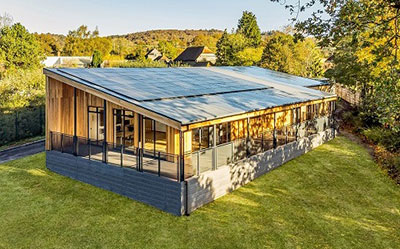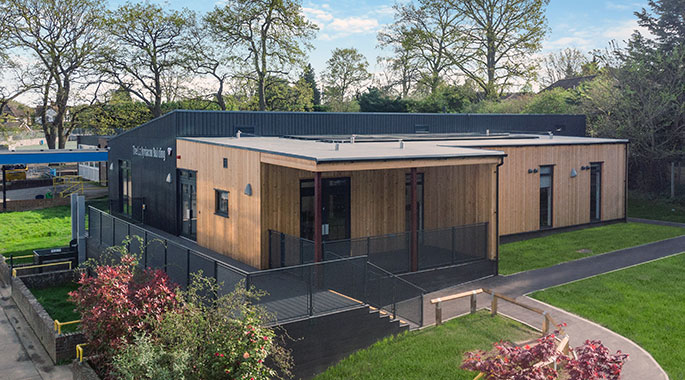In educational buildings, biophilic design principles can create a soothing backdrop that enhances well-being and engagement.
TG Escapes Modular Eco-Buildings have provided hundreds of school buildings using a timber frame and natural materials.
They have long championed the integration of biophilic design across all environments, creating spaces that mirror the calming effects of the natural world, which is especially beneficial for those with sensory challenges.
Schools and other buildings designed with calming natural materials could significantly improve the lives of autistic students, according to a growing body of research.
Traditional classrooms can be overwhelming for people with Autism Spectrum Disorder due to factors such as harsh lighting, distracting noises, and a lack of connection to the outdoors.
Biophilic design, which incorporates aspects of nature into buildings, offers a potential solution.
A ten-classroom building for students with PMLD and autism at Beacon Hill School in Wallsend, Tyne and Wear
The problems with traditional spaces
Conventional architecture often fails to consider the unique sensory needs of autistic individuals. Classrooms can be too bright, too noisy, and lack the calming influence of nature. This can lead to increased anxiety, difficulty focusing, and hinder a student’s ability to function effectively.
Even minor changes to a familiar environment can be upsetting for people with ASD. Biophilic design offers a way to create more predictable and autism-friendly spaces.
What is biophilic design?
Biophilic design is based on the idea that humans have an innate connection to nature and that incorporating natural elements into buildings can improve our mental health, well-being, and productivity.
This approach includes features such as:
- Natural light: Ample windows and skylights allow natural light to flood classrooms, reducing reliance on harsh artificial lighting.
- Access to outdoors: Easy access to gardens, decks, or outdoor walkways allows students to connect with nature and take breaks from the classroom environment.
- Views of nature: Buildings are positioned to offer views of trees, gardens, or other natural landscapes. Even pictures of nature can have a beneficial effect.
- Natural materials: Wood, stone, and other natural materials create a calming atmosphere and avoid repetitive patterns that can be visually overwhelming.
- Improved air quality: Advanced ventilation systems ensure a constant flow of fresh air.
How biophilic design can benefit people on the autism spectrum
Studies suggest that biophilic design can help reduce sensory overload in autistic individuals. Natural light, fresh air, and access to green spaces can all contribute to a more calming and manageable environment.
The consistent presence of nature can improve social interactions and emotional well-being, and enhance focus. Natural materials with varying textures and patterns can be more soothing than artificial ones.
These design features not only benefit autistic students but can also improve the overall feel of a school for everyone.
The future of biophilic design in schools
Schools are increasingly looking for ways to create more inclusive and supportive environments for students on the autism spectrum.
Biophilic design offers an approach that can benefit all students and staff. Companies such as TG Escapes specialise in designing and building schools that incorporate these natural elements, to create healthy and stimulating learning environments for everyone.
For more information call 0800 917 7726, email info@tgescapes.co.uk or visit www.tgescapes.co.uk.




















